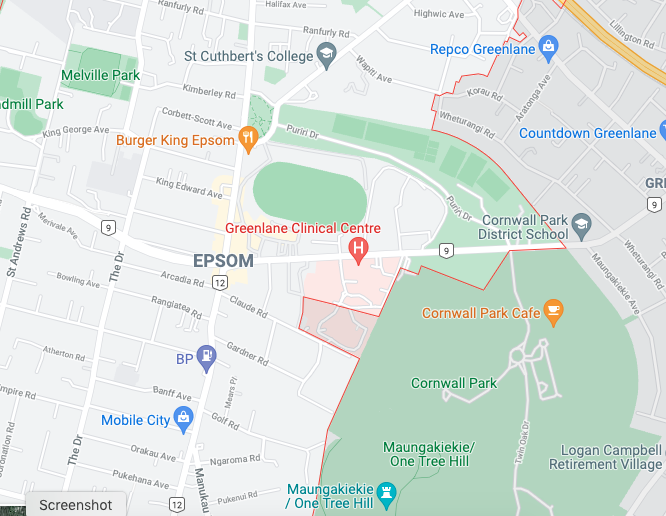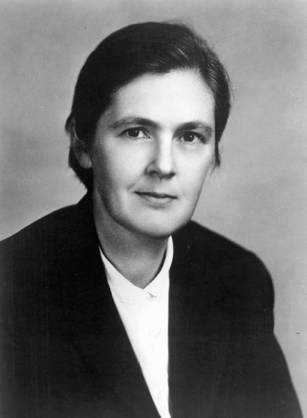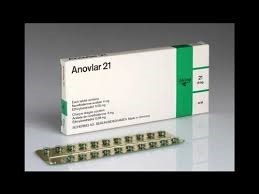by Terry Bellamak
The Health Select Committee heard Crown Law’s submission on the Contraception, Sterilisation, and Abortion (Safe Areas) Bill a week ago last Wednesday. To refresh your memory, Crown Law is the office that supplies the Attorney-General with section 7 reports that explain whether any limitations a bill places on the rights and freedoms in the New Zealand Bill of Rights Act 1990 (‘BORA’) are demonstrably justifiable in a free and democratic society.
The representative talked about the Oakes Test. That is, he mentioned it, and described it, but did not apply it. He merely noted that Crown Law did not have enough data to determine whether the first limb was satisfied. He said gathering that data is the select committee’s role, which is true.
The Oakes Test is one of many useful things to come out of Canada. In New Zealand we use the test to see whether a proposed limitation on a right or freedom in BORA is demonstrably justified in a free and democratic society. It requires the examination of the two distinct things: first, the objective the limitation is trying to achieve; and second, the means by which the objective is achieved, i.e. the limitation itself. What are you trying to do, and how are you going to do it?
Oakes Test
- To justify the limitation, the objective sought must be pressing and substantial.
- The means of achieving that objective must be proportional. It must satisfy these criteria:
- a) the means must be rationally connected to the objective
- b) the impairment of the rights in question must be minimal
- c) there must be an overall proportional balance between the objective and the limitation
So let’s apply the test to the safe areas bill.
Justification
To justify the limitation, the objective sought must be pressing and substantial.
What is the objective of the bill? To allow people who want abortions and people who provide abortions to enter places where abortions are provided without being harassed by people who want them to stop providing or receiving abortions.
Seems a difficult objective to argue against on its face – very few would seriously suggest preventing harassment is not pressing or substantial. New Zealand’s international obligations under the Convention to Eliminate All Forms of Discrimination Against Women and other instruments, its responsibility to provide a safe working environment for providers it employs, and its duty to health consumers under the Health and Disability Code all add weight to the argument that preventing harassment is pressing and substantial.
The counterarguments would likely run:
The objective is NOT pressing and substantial because
- it is not happening
- it is happening but it is not harassment
- it is harassment but it should be allowed
“not happening”
Submitters who argued harassment was not happening in Aotearoa relied on the lack of formal complaints of harassment to police or DHB management. They also relied on the Law Commission’s statement in 2018 about not seeing a need for safe areas, and its assumption that the Summary Offences Act 1981 would provide a means to address harassment, should it occur.
The answers to this counterargument lie in the evidence provided by submitters during the select committee process. They spoke of their own experiences trying to access abortion care and being chased, surrounded, verbally abused, and having things thrown at them. ALRANZ’s submission included firsthand accounts of harassment, excerpts from a survey of abortion providers about their experiences with protesters, and pictures of anti-abortion protesters and their signs (with faces obscured). Two of the select committee members, both health care professionals, shared their own stories of anti-abortion harassment directed at them.
Why are there no complaints? It turns out there are pragmatic reasons for that.
To use the Summary Offences Act, you need to call the police and wait around for them to show up. People who have just had an abortion want to go home and rest. People who deliver abortion care have enough to do in their jobs without pursuing complaints that will cost them time and energy but may not lead to any meaningful sanction.
Abortion is still stigmatised, so people may not expect police or the DHB to take their complaint seriously. Submitters who could have made complaints, including committee members, said they preferred to just get on with their lives.
For any member of the Health Select Committee to argue that harassment does not happen, they would need to presume that every person who told their story was lying, including their colleagues on the committee.
“not harassment”
Many submitters admitted protesters were out there on a regular basis, with or without signs and props. But they said what occurred did not constitute harassment.
Some spoke of the pledge they took in order to participate in “40 days for Life” protests. They said it required them to be “quiet and prayerful”, and not to speak to anyone unless spoken to. They spoke of quietly singing and praying the rosary.
But here’s the thing. The folks who signed the pledge could have followed it to the letter, and yet harassment could still be a problem. How? Two ways.
First, the shouting, name calling, and overtly offensive behaviour may be perpetrated by another group, perhaps one that did not make a submission. There are many actors in the anti-abortion activist space, and some are more extreme than others.
Second, what makes this kind of targeted harassment so toxic is the incipient threat of escalation to violence. Violent people are capable of behaving peacefully right up until they start acting violently. No one can tell whether a person might turn violent just by the way they look. After all, Shelley Shannon peacefully prayed and sang outside clinics for years before finally shooting Dr George Tiller.
Those who have experienced abortion harassment tell us they felt intimidated, targeted, harassed. It is reasonable to expect a reasonable person to feel that way about the behaviour they describe. Why would we not believe them?
“harassment but should be allowed”
Some anti-abortion submitters acknowledged that abortion patients and providers might be distressed by protesters presence outside services, but maintained it was important they remain there for several reasons:
- some people find them helpful
- they provide information about other options than abortion
- they provide moral support for people who are being coerced into having an abortion
- their actions are for the greater good
Are these reasons sufficient to render the objective not pressing and substantial?
First we should ask, how many people find their presence helpful? If we accept that some abortion seekers will find the protesters helpful, we must also accept that some will find them unhelpful, and some will be neutral. How do the numbers break down?
The short answer is: no one knows. There is no reliable research on how many people seeking abortions were persuaded not to proceed by protesters, nor how many panicked and bolted at the sight of protesters and had to reschedule, nor how many set their jaw and pretended to ignore the protesters as they entered, nor how many did not care about the protesters.
Other research from the USA may shed light on the issue, however. It stands to reason the people most likely to find protesters helpful would be people who might regret having an abortion. If we know how many later regretted their decision to receive abortion care, it might give us insight into how many people might want to hear the protesters out, or welcome their input.
Research into feelings of regret after abortions found 98% felt they had made the right decision one week after the abortion, and 99% felt that way five years later.
This suggests very few people come to regret their choice. If the people most likely to find protesters helpful are those who are poised to regret their abortion, then it follows that they are few.
What about information about other options? Abortion services already have unbiased, professional counsellors whose job it is to work through all the options, and all abortion patients have the right, by law, to consult with them. The protesters, while they may be across all the options, are far from unbiased.
Other research into abortion patients’ decisional certainty shows abortion patients are as certain or more certain than people making decisions about other kinds of health care. This suggests that abortion patients are less likely to be undecided about their course of action.
But there is one additional thing protesters can do: make offers of financial support as a reward for not proceeding with an abortion, apart from the usual governmental support. ‘Crisis pregnancy centres’ around the country make similar offers to people who may find them quite helpful if they wish to continue the pregnancy. They may even get a better offer outside the abortion service than in the centres.
What about support for people being coerced? Staff at abortion services (not just counsellors) are trained to watch for coercion, or mere ambivalence, on the part of patients, and to find out whether they really want to proceed. The Standard of Care, a document that establishes the protocols for abortion care in New Zealand, requires patients to be spoken with alone, away from support persons, so that they can speak frankly. It seems likely protesters would struggle to have such a private conversation out on the street with support persons present.
What is the greater good anti-abortion protesters seek to promote? The protesters make a foundational presumption that continuing a pregnancy is always better than having an abortion. It follows they would consider the harassment they engage in for the greater good of preventing abortions should be allowed.
This foundational presumption is not shared by the rest of New Zealand society. It is no longer government policy. Opinion polls have consistently shown a large majority of New Zealanders believe abortion should be available on request if the pregnant person wants one.
Neither the deeply held personal beliefs of anti-abortion protesters nor the chance their presence might benefit a few people negate the pressing and substantial nature of the objective, which is preventing harassment of people seeking or providing abortion care.
The first limb of the test is met.
Proportionality
The means must be rationally connected to the objective
Again, the objective is to allow people who want abortions and people who provide abortions to enter places where abortions are provided without being harassed by people who want them to stop providing or receiving abortions.
The means chosen is to prohibit “intimidating, interfering with, or obstructing” protected persons (those seeking or providing abortion care) in order to frustrate their purpose for being there in a manner that a reasonable person would know is distressing, or communicating with them (impliedly about abortion), or recording them, but only within 150 meters of the abortion service.
QED, they are rationally connected.
Impairment of the rights in question must be minimal
What are the rights being impaired?
- freedom of expression
- freedom of peaceful assembly
- manifestation of religion and belief
How much are these rights impaired by the safe areas bill?
Freedom of expression and freedom of assembly
People would not be able to address protected persons in the safe area. They would not be able to gather with signs. There would be no ‘sidewalk counselling’ permitted.
They would not be able to pray or sing audibly. That sounds draconian at first. But what is the purpose of praying and singing as a display? To some protesters it might be “trying to save abortion patients’ souls.” To others, it might be an opportunity to shame abortion patients. But the simplest expression of the meaning must be “we are here to demonstrate we believe you are doing something wrong” – to create pressure on them to change their plans.
No obligation exists on the part of abortion patients or providers to give the protesters a hearing. But in that time and place, they cannot avoid it. The attack on their privacy and dignity is inescapable. This is the reason the bill moves protest activity out of the safe area, where patients and providers can avoid it if they wish.
Outside the safe area, protesters are welcome to gather, sing, pray, scream, and talk to whomever they want, including protected persons. Protesters are not being controlled, except in the safe area. The prohibited behaviour is not prohibited at all outside the safe area.
The US Supreme Court in Hill v Colorado called similar restrictions “reasonable time, place, and manner restrictions” and found they were justifiable limitations on the right to free speech. It is significant that what is arguably the most militant free speech jurisdiction on the planet found safe areas were reasonably justifiable.
This almost certainly does not feel minimal to the anti-abortion protesters, because trying to persuade or shame or frighten off those particular people is their whole reason for wanting to be there. The very people being protected are the very people they want to target, for the very reason they meet the definition of protected persons.
But the bill accomplishes the objective while minimally impairing their right to freedom of expression and assembly, because they are not silenced – they just cannot target those particular people. Anyone who wants to talk to the anti-abortion protesters is free to do so, and they are free to respond – outside the safe area.
Manifestation of religion and belief
Manifestation of religion and belief includes “worship, observance, practice, or teaching, either individually or in community with others, and either in public or in private.”
It is unclear whether protesters’ right to manifestation of religion and belief includes forcing others to participate as an unwilling audience.
Even if it did, however, the protesters are free to engage in whatever display suits their religious beliefs outside the safe area. It may be more difficult to dragoon non-consenting participants there, but it is not a limitation on their rights to freedom of expression or assembly or manifestation of religion that people are able to avoid them if they wish.
Again, anti-abortion protesters’ right to manifest their religious beliefs in any way is not limited at all, except inside the safe area. This limitation is minimal.
Overall proportional balance between the objective and the limitation
Once again, the objective is to allow people who want abortions and people who provide abortions to enter places where abortions are provided without being harassed by people who want them to stop providing or receiving abortions. The means of doing so is to limit what protesters can say or do in the safe area only. Everywhere else, their rights are the same as always.
On the one side we have anti-abortion protesters’ right to freedom of expression, freedom of assembly, and right to manifest religion and belief. On the other, we have abortion patients’ and providers’ right to privacy, right to seek medical care, right to a safe workplace, and right not to be discriminated against.
On the whole, the bill looks like it creates a rough-and-ready balance between the rights of protesters and the rights of protected persons.
The second limb is met. The Oakes Test is satisfied.
To those who really want to come at protected persons in safe areas, this application of the Oakes Test will not be convincing.
They are free to apply the test themselves.









